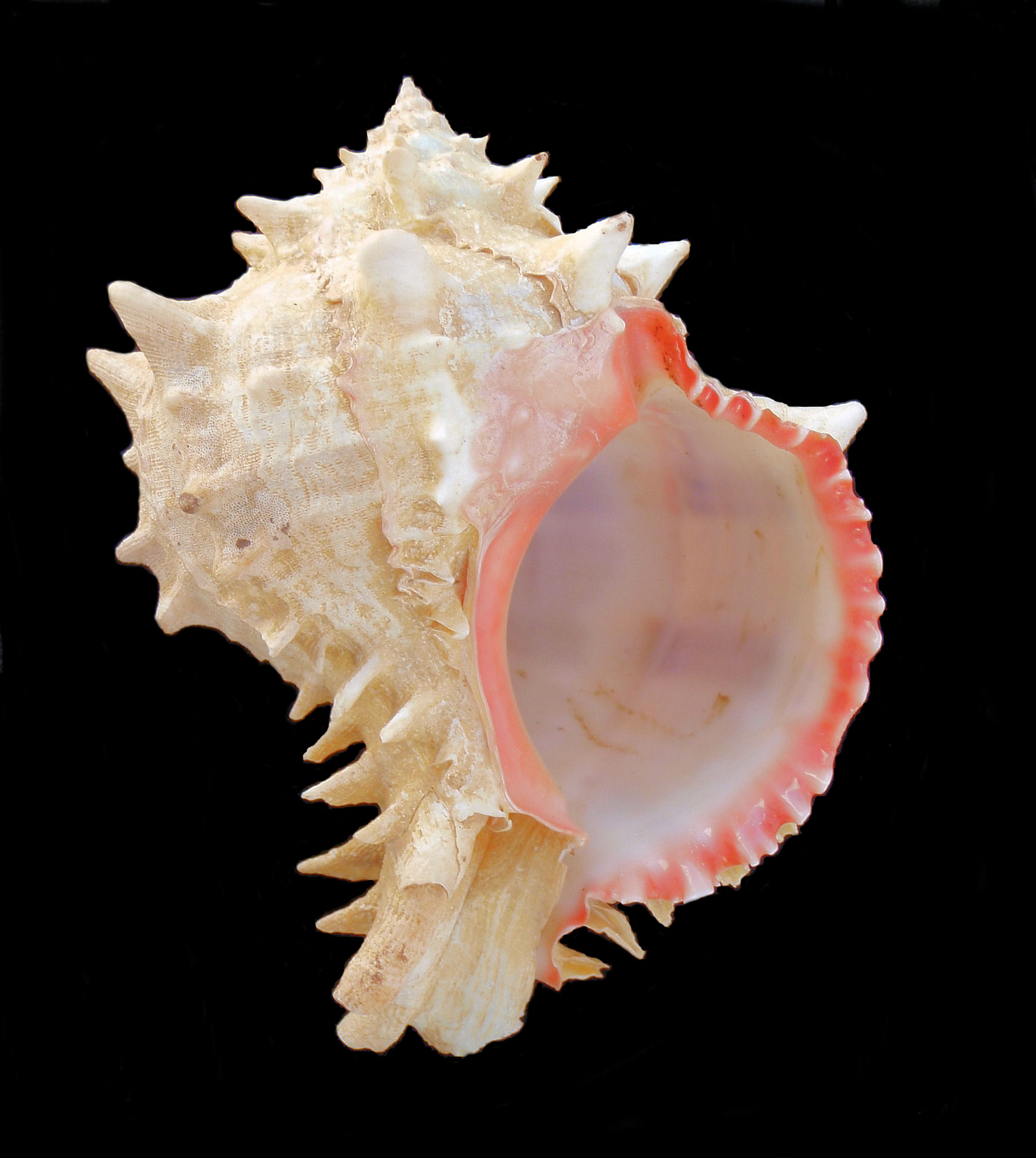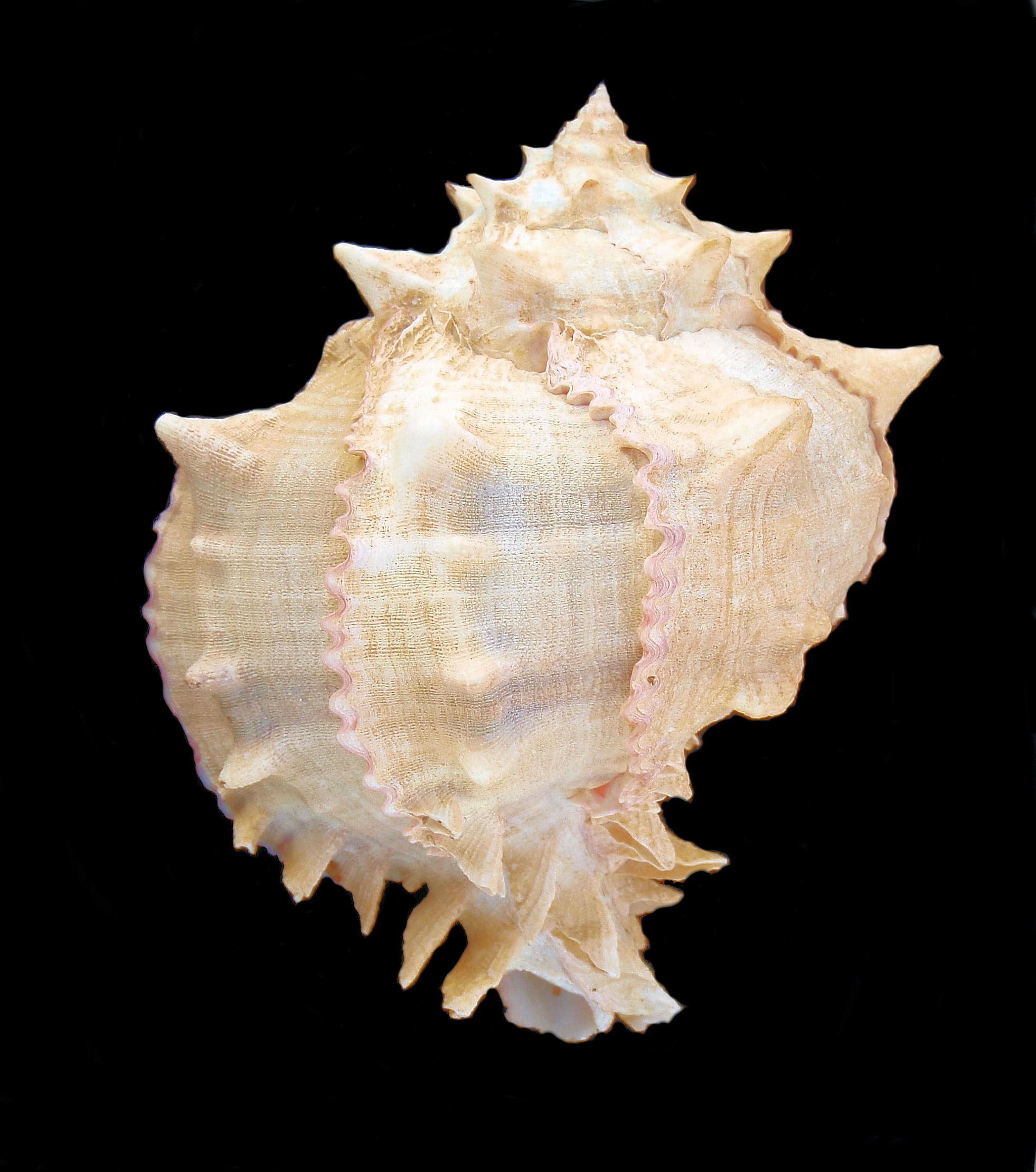Cabbage Murex Shell, Hexaplex brassica

 Cabbage Murex shell, Hexaplex brassica. Size: 14.7 cm (5.8 inches) x 10.7 cm (4.2 inches). Shell provided by the commercial fishermen of the greater Los Cabos area, Baja California Sur, April 2010.
Cabbage Murex shell, Hexaplex brassica. Size: 14.7 cm (5.8 inches) x 10.7 cm (4.2 inches). Shell provided by the commercial fishermen of the greater Los Cabos area, Baja California Sur, April 2010.
Phylogeny: The Cabbage Murex, Hexaplex brassica (Lamarck, 1822), is a gastropod mollusk that is a member of the Muricidae Family of Rock Shells. The genus Hexaplex is one of one hundred ninety-eight genera in this family, and there are twenty species in this genus. They are also known as the Rose Murex and in Mexico as Busano Repollo.
Description: The Cabbage Murex shell is large with five to seven whorls, a low spire, and varices that extend the length of the body whorl. The varices have heavy spines or horns. This shell has a moderately long, open or closed, siphon canal and a large oval aperture. The exterior of the shell is light brown, pink or white with the edges of the varices are marked by pink frills. Most specimens have three bold to very subtle brown bands. The interior is white with pink around the margin of the aperture. The pink rim around the margin of the aperture distinguishes the Cabbage Murex from the similar Pink-mouth Murex Shell, Phyllonotus erythrostomus, which is all pink or all white inside. The Cabbage Murex reaches a maximum of 21 cm (8.3 inches) in length and 15 cm (6.0 inches) in height.
Habitat and Distribution: Cabbage Murexes are found on rock or mud substrate. They live in the intertidal zone and to depths up to 55 m (180 feet). They are a tropical Eastern Pacific species. In Mexican waters they range from Loreto, Baja California Sur to Guatemala. They have not been documented from the west coast of the Baja Peninsula, however the shell photographed below came from the greater Todos Santos area at the southwest corner of Baja California Sur, where they are plentiful.
Ecology and Behavior: Cabbage Murexes are predators that feed primarily on bivalves. They are gonochoric and reproduce sexually. The eggs are laid in protective capsules. There is no mention in the available literature of them engaging in any types of parasitic, commensal, or symbiotic relationships. From a conservation perspective they have not been formally evaluated however they are fairly common with a relatively wide distribution and should be consider to be of Least Concern.
Synonyms: Hexaplex (muricanthus) brassica, Hexaplex (Trunculariopsis) brassica, Murex brassica, Murex ducalis, Murex rhodocheilus, and Phyllonotus brassica.